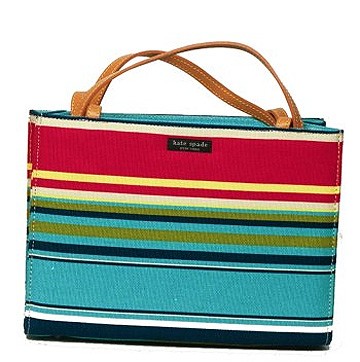
Confronting counterfeits
The recent raid at Dallas’ Purse Mart brought a lot of attention to an underground trade that people may not know much about.
The Purse Mart raid yielded an estimated $250,000 in counterfeit designer handbags, according to authorities.
The owner’s records indicate more than $300,000 in sales prior to that date.
However, shoppers generally do not see the harm in buying counterfeit goods.
“You’re not just hurting Kate Spade, it hurts the whole economy,” Barbara Kolsun, senior vice president and general counsel for Kate Spade said. “When you buy fakes, you contribute to a whole underground illegal economy.”
Kolsun estimates that there is one fake handbag sold for every authentic Kate Spade sold.
She also estimates their losses at approximately $70 million a year.
Many times, items are sold that do not directly copy a designer’s trademark but come dangerously close. For example, canvas purses are made displaying a “G” instead of Coach’s “C” logo.
Tim Morrison, manager of intellectual property of Coach, labels these misleading similarities as copyright infringement.
“A New York Federal judge ruled that it was subsequently indistinguishable from the “C” trademark,” Morrison said.
Though fake designer accessories aren’t as easy to find in Dallas as in New York City, students say they have seen designer look-alikes in the Sam Moon Trading Company on Harry Hines Boulevard and in Joy Purse in Snider Plaza. Fakes were also spotted in privately owned, non-chain beauty supply stores.
Handbags are just one form of forgery.
Makers of accessories including watches, scarves, belts and hats rip off designers as well.
While the desire for designer goods runs high on campus, students have different perceptions on buying fakes.
“I don’t think there’s anything wrong with it,” a junior English major Jennifer Chapa said. “Money does not make fashion; it’s how you wear it.”
Second-year history major Zach Urquhardt believes that people shouldn’t have to pose as something they are not.
“I think it’s stupid. I think people should be confident enough in what they can get, and it’s a knock at society that people feel they have to fit in with fancy labels,” Urquhardt said.
Kolson argues that the fight is not just over money, but over intellectual property. She speaks to the press often, strongly urging consumers against buying fake designer goods.
“Counterfeiting is a federal crime. It’s stealing our name. We want to get the message out there that this is not cute,” she said.
Outside of flea markets, bazaars, “purse parties” and private shops, the largest outlet for counterfeiters is eBay.
“We get calls all the time from people that bought a Coach [bag] on eBay and they want to know if it’s real. And without being able to physically inspect it, there’s no way to tell,” Morrison said.
eBay’s terms and conditions strictly prohibit the sale of counterfeit or intentionally misleading products.
But unlike the design houses, it does not expressly pursue violators.
Instead the Internet site has a tip form for users to report sellers with counterfeit goods.
Most design houses have a report form available on their Web sites for customers to give leads on counterfeiting. Loss prevention teams also work with private investigators, lawyers and law enforcement agencies worldwide to protect their company’s trademarks.
They also exchange tips with other design houses. If they receive a tip that replicas of their bags were sold along with other designers’, they contact the other company so those companies have the opportunity to take action as well.
Both Morrison and Kolson emphasize that you get what you pay for when you make a designer (or replica) purchase.
Unless the transaction was made at the designer’s store or a department store, there is no way to guarantee that the article is genuine.
Though it’s clear which side designers and law enforcement are on, the consumers still have to make the decision for themselves.
“I wouldn’t be too happy if I created a popular pattern then imitators [copied] me and undersold me. It’s fun to get a ‘designer’ bag for hardly anything, though,” first-year student Elizabeth Adams said.








